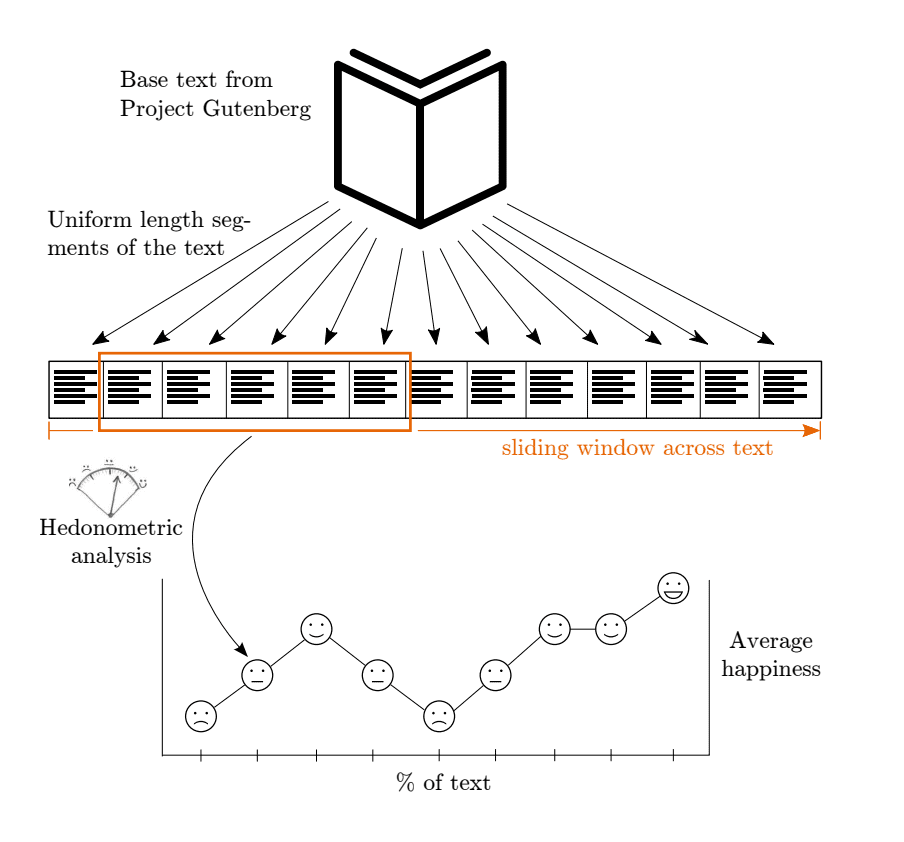
Stories have gripped humans for ages by evoking powerful emotions. Even years ago, researchers wondered - are there fundamental patterns underlying how tales tug our heartstrings? A 2016 study analyzed over a thousand stories to uncover the basic emotional arcs that form the building blocks of narratives.
Using digital methods, researchers at the University of Vermont quantified the moment-to-moment emotional trajectories of stories from the Project Gutenberg collection. They tracked sentiment throughout each book using a rolling average approach. This generated an "emotional arc" capturing how positivity rises and falls across the narrative.
Through data science techniques like matrix decomposition, clustering, and neural network mapping, six core emotional arcs emerged:
- Rags to riches (rise)
- Tragedy or riches to rags (fall)
- Man in a hole (fall then rise)
- Icarus (rise then fall)
- Cinderella (rise, fall, then rise)
- Oedipus (fall, rise, then fall again)
You can likely picture classic stories matching these shapes. Cinderella follows a rags-to-riches-to-rags-to-riches pattern. Oedipus the King exhibits a tragic fall, brief rise, then another fall. Each arc formally captures intuitions storytellers have traded on for ages.
Notably, the study found arcs with a fall-rise shape (man in a hole, Cinderella) were collectively most common, at around 30% of tales. The next most prevalent were tragedies at around 32%, then oedipal fall-rise-falls at 31%. Purely rising arcs were rarest at just 5% of stories.
This indicates emotional rollercoasters captivate us more than simple rises. Tragedy has proven perennially popular, despite leaving readers sad. Stories that plunge protagonists into despair before rising contain greater drama.
The analysis also uncovered that more complex arcs with multiple peaks and valleys enjoyed greater success by one metric: website downloads. Stories whose shape matched the Icarus, Oedipus, and double "man in a hole" arcs saw far more downloads than simpler arcs.
This hints the emotional journey impacts how narratives spread. The anguish of tragedy may make such tales powerfully shareable. Multi-phasic arcs may also hook readers through twists and turns.
Of course, downloads provide only a rough measure of success. Other factors like marketing and fame contribute. Still, the findings suggest crafting an evocative emotional trajectory helps stories resonate.
The study demonstrates how data science can unearth hidden patterns in the arts. Formalizing intuitions about entertainment with empirical evidence remains novel, intriguing territory.
Quantitative analysis today is even more powerful thanks to advances in machine learning and cultural analytics. New techniques promise insights unavailable to past generations of literary scholars.
Combining these digital humanities approaches with insight and traditional criticism will likely bear the richest fruits. As machines grow skilled at classifying sentiment and archetypes, what new discoveries await about the stories humans compulsively tell? What makes a narrative emotionally compelling transcends any one discipline.
Sources:
The emotional arcs of stories are dominated by six basic shapes



